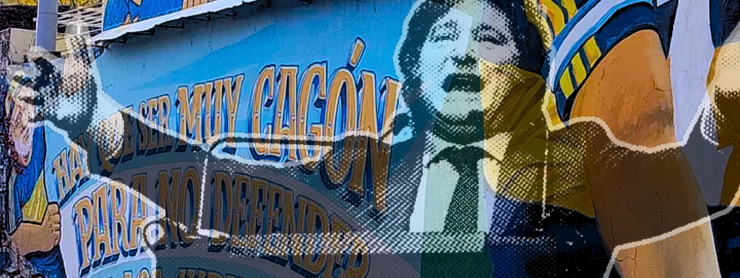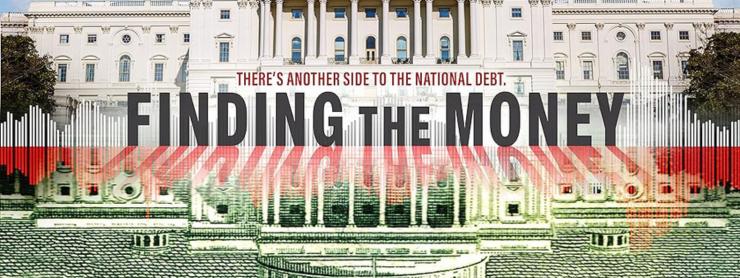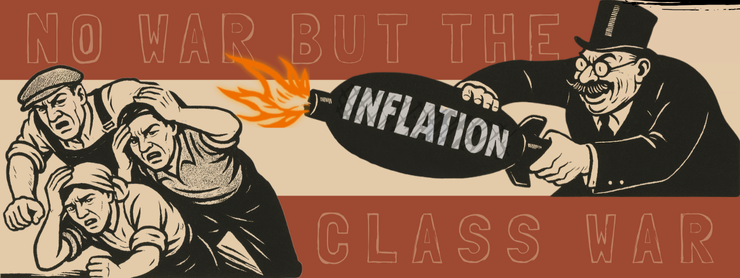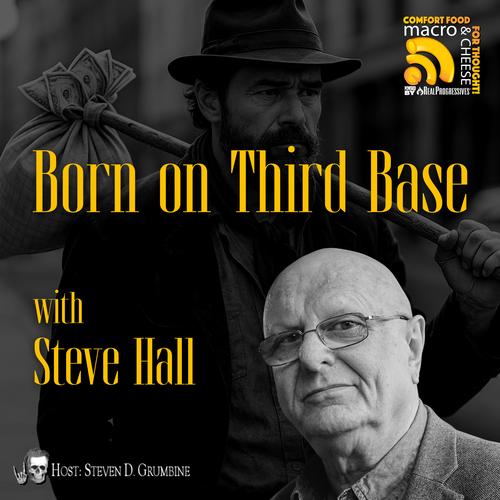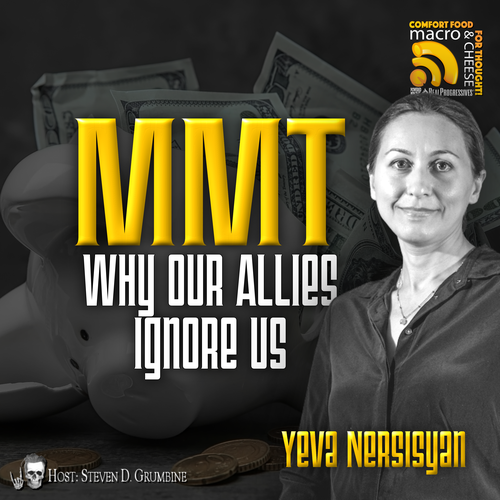Originally posted on April 8, 2019 at the New Economic Perspectives blog.
The attacks on MMT are taking a comical turn. A recent one, courtesy of Noah Smith, takes aim at a paper I wrote in the 90s titled “Monopoly Money: The State as a Price Setter”.
It focused on a key MMT idea—that the currency-issuing monopolist (just like any other monopolist) is a price setter. The economics that I was taught didn’t even consider the implications. So I wrote down a few equations to look at different scenarios of prices paid and real resources purchased by a currency-issuing government, given the level of aggregate tax liability and private saving desires.
The paper was followed by other empirical work from the MMT community. So, while I initially started responding to Noah’s hysterical blog, I decided to say a few words about the implications of the paper instead, and provide a short reading list of other empirical work from MMTers on various topics.
Still, Noah isn’t getting a pass.
Now, all models make simplifications and all models are flawed. But they can be used to clarify an idea. The important question is, did they attempt to analyze some real world stylized facts or some fictional story. An example of the latter would be the mainstream model of a shipwrecked Robinson Crusoe, who makes production and consumption decisions on a deserted island. I stuck with the real world.
The paper starts off with an example where the public sector (the currency monopolist) purchases one good (rather, a service) from the economy – that of firefighters – and asks “how many hours of firefighting labor can the public sector purchase, given prices, taxes, and saving desires”. For this, Noah is accusing me of modeling an economy in which “everyone in the entire economy dies” (his emphasis).
Heck, I can’t think of a more appropriate example! The planet is burning, isn’t it?
Has Noah forgotten his Econ 101 “guns and butter” tradeoff? That’s where an economy can either produce butter (e.g., feed its people) or guns (e.g., wage endless wars), but so long as any combination of the two goods lies of the production possibilities frontier (PPF), the economy would be allocating its resources efficiently!
Generations of students were initiated into economics with this model, the effect of which was to teach them an unexamined acceptance of morally reprehensible expenditures and investments as efficient market outcomes (in this case – on war, but you can substitute fossil fuel production, incarceration, or anything else into the PPF).
Maybe I should have stuck with orthodoxy and used guns, so that Noah’s dramatic conclusion that my model is an “employment of doom” makes a bit more sense.
I chose firefighters. I thought they were saviors, not mercenaries.
Next, Noah wants you to believe that my 1-good model is “people [who] are effectively doing slave labor for the government,” because of some quotes in the paper on taxation in colonial Africa. (This argument is so inane that it doesn’t merit a reply, so here is some background for the MMT-curious with links.)
My paper does start with quotes from prominent scholars about how taxes were used in colonial Africa to create demand for the colonizers’ currencies (which also gave rise to cash crops and wage labor). The point was to show an example of the coercive nature of taxation.
Is there one person who disagrees with the statement that taxes are coercive? Taxes are compulsory. They are non-reciprocal. And this is true for democratic societies or authoritarian ones.
When I first heard Warren Mosler’s argument that people used a given currency because their taxes were denominated in it, I thought it was the most implausible idea. But then I started digging. My undergraduate professor Mat Forstater sent me direct historical evidence of how taxes could and had been used to require people to use an otherwise-useless-to-them currency—the case of colonial Africa. I passed these examples on to Charles Goodhart who, lo and behold, cited them in his seminal paper The Two Concepts of Money. (Lucky for him, Noah hasn’t discovered his paper yet.)
And thus began the MMT research project on the history of money.
There are of course many “democratic examples” of the tax-driven nature of currencies. Take the example of the Argentinean provinces, which in the depths of the 2001 crisis launched their own currencies (e.g., patacones). They did this by requiring citizens to pay local taxes and utility bills in the new currency and then by paying state employees and contractors in the new currency. I was in Argentina at that time and can vouch that people didn’t like it, but storefronts were plastered with signs “We Accept Patacones”. Then I found an argument put forth by Ben Franklin – a well-known advocate of paper money – that it is the future repayment of taxes that gave it value. In other words, taxes were used not to ‘fund’ the states (indeed the colonies could not collect taxes before they had spent the paper currency first), but to maintain the currency’s value by removing some of it from circulation.
In a subsequent paper on the relationship between power and money, I argue that political sovereignty is never fully complete without monetary sovereignty, and that the right to issue and control a nation’s currency was a critical victory for former colonies in their battle for economic independence. In the US, we fought a war (in part) to acquire the right to issue currency and in response to the Currency Acts of 1751 and 1764. No taxation without representation.
So yes, currencies are ‘acceptable’ because of the tax requirement, no matter if the state is a democratic one or not. And if we are serious about democratizing money (given that it’s born out of this tax relationship), we must also ensure that it is employed to serve the public good and eliminate the very unemployment it creates. Furthermore ‘democratizing money’ cannot be done without ‘democratizing labor, ’ as I argued recently at Christine Desan’s Harvard conference on “Money as a Democratic Medium.”
While Colonial Africa was among the first examples we found, research on the origins of money confirmed and reconfirmed the taxes-drive-money mechanism. We dug deeper and wrote a ton on the history of (and the history of thought on) money (these papers, books, dissertations by Charles Goodhart, Mat Forstater, Randy Wray, John Henry, Eric Tymoigne, Alla Semenova, myself are a small selection).
Innes, Knapp, and Keynes offered important insights, but modern economists were of no use—after all they relied on fictitious barter/neutral money models (Farley Grubb was a rare exception). We searched the other disciplines and found more evidence that money did not emerge spontaneously from markets (or barter), but from the powers of the state (very broadly defined) to impose nonreciprocal obligations on its subjects.
We found the work of historians, anthropologists, sociologists who provided evidence for and corroborated some of our arguments (Philip Grierson, Viviana Zelizer, Michael Hudson, Christine Desan, David Graber, and others). We learned from their work and that of others, though I’m certainly not suggesting they endorse or agree with (everything in) MMT. Colleagues from law, political studies, humanities, finance, etc., joined us – and the MMT project became truly multidisciplinary. Fellow MMT travellers – too many to list here – converged at the first two MMT conferences and Chris Desan’s workshop. Others, called on their own disciplines to reclaim the study of money, e.g., read Rebecca Spang’s recent appeal to historians.
To sum up, taxes drive money, in virtually all economic/historical contexts, whether Noah gets it or not. And even a highschooler would understand that modeling this stylized fact is not endorsing a genocidal regime.
So here is a very short summary of some of the implications of the paper he is criticizing, followed by a short list of other MMT empirical work on a variety of topics.
Monopoly Money: the State as a Price Setter
(Not a single firefighter was harmed in this exercise or enslaved to work for the state.)
What are the questions?
- Standard economics talks about monopoly, but ignores the one pure case of monopoly: that of the currency.
- There is still no recognition that the tax creates a type of ‘monetary unemployment’ (distinct, though in my view, not incompatible with Keynes’s). The obligation to pay the tax in a given currency creates offers for sale of goods and services (g&s) in that currency.
- The government can choose the manner in which to purchase those g&s and thereby provide adequate amount of currency to the population to satisfy the tax. If it does not, involuntary unemployment results.
- The government has the responsibility to resolve the unemployment it has created.
- If it doesn’t, the level of employment/unemployment in the economy will be indeterminate (esp., given uncertain saving desires).
- The government has the option and ability to employ the unemployed directly.
- As a currency monopolist, it could determine the price of that labor and let the budget float (to accommodate the tax bill or saving desires). We call this the “fixed price-floating quantity” rule.
- Today, the government chooses not to do that. Instead, it spends on a “floating price-fixed quantity” rule. It constrains the budget, pays market prices for g&s, and fails to solve the problem of unemployment (as above).
- My paper looks at different scenarios that have implications for the fixed budget/floating budget options, and considers questions like “how many resources could be transferred to the public sector, given a certain aggregate tax liability, and in which cases is that amount indeterminate.”
- Finally, it raises questions like “If the state can set prices, should it? And if so which ones?”
The upshot is that, there is an inverse relationship between the price the government pays for goods and services and the quantity of real goods and services it receives, for a given level of taxation and net saving desires. Constraining the budget creates unemployment and under-provisions the government. If instead, the government allowed its budget to float, if could design a countercyclical policy (such as the Job Guarantee) that would be a superior price anchor and automatic stabilizer, which I modeled in a subsequent paper. So unlike basic neoclassical PPF models that pass objectionable tradeoffs as efficient, the Job Guarantee explicitly rejects the use of unemployment for economic stabilization purposes.
Later, Warren Mosler and Damiano Silipo published another empirical analysis on this precise question (the price setting power of government and its policy prerogative to adopt a fixed price/floating quantity rule) in the Journal of Policy Modeling. They showed how the Job Guarantee (they call it a transitional job offer) can be used to enhance the ECB’s single mandate for price stability and why it was superior to other alternatives. The implication from these two models is that government policy and prices paid by government are the ultimate source of the price level.
Far from the Economics of Doom, MMT points to superior policies for full employment and price stability.
ADDENDUM
Here is a very brief reading list of other empirical MMT work—a sample of the wide variety of methods and topics to which it has been applied. This scratches the surface of the empirical and analytical work of MMT. Also the list is confined to the UMKC MMT crowd. You should look up the voluminous work of Bill Mitchell (his blog, research center, and book publications) and that of fellow travellers, who have their own research programs (e.g., Bond Economics).
TEXTBOOKS
- Macroeconomics, Mitchell, Wray and Watts
- Money and Banking, Tymoigne
RESEARCH PAPERS
Fed/Treasury operations, Fiscal and Monetary policies
- Do Taxes and Bonds Finance Government Spending, Bell/Kelton
- Fiscal Effects on Reserves and Fed Independence, Wray and Bell/Kelton
- MMT and Fed/Treasury operations, Tymoigne
- Helicopter Drops are Fiscal Operations, Fullwiler
- Time to Reign in the Fed, Fullwiler and Wray
- Quantitative Easing and Proposals for Reform of Monetary Policy Operations Fullwiler and Wray
- Treasury Debt Operations—An Analysis Integrating Social Fabric Matrix and Social Accounting Matrix Methodologies, Fullwiler
- Functional Finance and the Debt Ratio, Fullwiler
- Sector Financial Balances Model of Aggregate Demand and Austerity, Fulwiler
- Sustainable Fiscal Policy and Interest Rates under Flexible Exchange Rates, Fullwiler
- Monetary Mechanics: a Financial View, Tymoigne
- Interest rates and fiscal sustainability, Fullwiler
- Yes Deficit Spending adds to Private Financial Assets Even with Bond Sales, Kelton
- Debunking the Public Debt and Deficit Rhetoric, Tymoigne
Exogenous Pricing
- Monopoly Money the State as a Price Setter, Tcherneva
- Maximizing price stability in a monetary economy, Mosler and Silipo
ELR, Job Guarantee
- Job Guarantee: Public Service Employment, Wray, Dantas, Fullwiler, Tcherneva, Kelton
- Macroeconomic Stabilization Through an Employer of Last Resort, Fullwiler
- The Costs and Benefits of a Job Guarantee: Estimates from a Multi-Country Econometric Model, Fullwiler
- Employer of Last Resort: A Case Study of Argentina’s Jefes Program, Tcherneva and Wray
- ELR-led Economic Development: A Plan for Tunisia, Kaboub
Unemployment, Inequality, Social Security, Poverty, Housing, Financial Instability
- Full Employment, Inflation and Income Distribution, Tcherneva
- A Hard Nosed Look at Worsening US household Finance, Tymoigne
- $29,000,000,000,000: A Detailed Look at the Fed’s Bailout, Felkerson
- Who Gains When Income Grows, Tcherneva
- Does Social Security Need Saving, Wray
- Central Banking Asset Prices and Financial Fragility, Tymoigne
- Measuring Macroprudential Risk through Financial Fragility: A Minskian Approach, Tymoigne
Ok that’s for starters.
14 RESPONSES TO “MMT, MODELS, MULTIDISCIPLINARITY”
- James Cooley | April 8, 2019 at 5:45 am |(Not a single firefighter was harmed in this exercise or enslaved to work for the state.)No such disclaimer can be made when firefighting was a private enterprise in major American cities during the 19th century. Then private fire companies raced to be the first to arrive at a fire and fights often broke out between competing companies while hapless homeowners watched their property burn.
- Francisco Flores | April 8, 2019 at 9:24 am |Thank you for the great and thorough response. It amazes me that that snowflake Noah Smith has a column and the following he has. In any event, could you clarify a question on the assertion that taxation creates unemployment?
– If the govt is running a deficit, doesn’t that mean that whatever demand the tax is taking out of the economy is being immediately put back through the spending? If so, how then is the tax creating unemployment?
– According to classical/Austrian/monetarist economics,unemployment doesn’t exist of course. So if demand is taken out of the economy, prices/wages decline and labor markets clear. Is there a response from MMT on this view?- Allan | April 8, 2019 at 8:40 pm |“If so, how then is the tax creating unemployment?”From my reading of Mosler’s Full employment and price stability, it is because the deficit isn’t large enough. The actual holdings of nfa are less than the desired holdings, with the result being involuntary unemployment.And one of the critiques of the idea of clearing markets I have read, is that both workers and firms have financial contracts, and so cannot accept prices (including wages) to fall to a point where the market clears.
The decline in prices may make them insolvent.
- Allan | April 8, 2019 at 8:40 pm |“If so, how then is the tax creating unemployment?”From my reading of Mosler’s Full employment and price stability, it is because the deficit isn’t large enough. The actual holdings of nfa are less than the desired holdings, with the result being involuntary unemployment.And one of the critiques of the idea of clearing markets I have read, is that both workers and firms have financial contracts, and so cannot accept prices (including wages) to fall to a point where the market clears.
- Mel | April 8, 2019 at 5:31 pm |(Checking out the lessons I think I’ve learned –) The people the government spends with are not the same people that the government collects taxes from. If the government spends dollars with Halliburton, but collects taxes from me, then I don’t then have the dollars to eventually pay my taxes. I have to go to the market with goods or services I can provide, and get some dollars from someone who got some dollars from someone who got some dollars … from Halliburton. If I can’t do that, then I’m unemployed. If I can, then I and everybody else up the chain are not unemployed.
- George McKee | April 8, 2019 at 10:26 pm |” The important question is, did they attempt to analyze some real world stylized facts or some fictional story.” Wrong! There are two important questions: How realistic are the models? and: Do they make better predictions (or retrodictions) about the state of the world, or worse ones? Real scientific theories don’t use made-up data masquerading as “stylized facts”. These concepts are not that difficult; other social sciences have known them for 60 years or so.These defects notwithstanding, Noah Smith’s main complaint is that he couldn’t find any formalizable statement of MMT. You could have refuted his article with a single citation to a paper that actually states the theory, but instead all you can do is cite entire textbooks and conferences and a laundry list of articles that “empirical work” on your topic.I don’t have time to study all of this to figure out whether there’s a grain of sense in it or not. At this point, MMT to me is no more of a theory than is Marxist Economic Theory (MET), they’re both econo-political ideologies that are malleable enough to say just about anything consistent with the results that their proponents would want to agree with.
- Charles Silva | April 9, 2019 at 2:37 pm |I’m pretty sure Mosler means “taxes create unemployment” in a different sense. It just means that governments create a demand for their currency when they impose a tax, and this demand for currency creates unemployment. So like if you need to pay taxes on your property you need currency, and to get currency you need a job.
- Adam1 | April 9, 2019 at 3:02 pm |George,
The MMT parts about how money is created are very much grounded in how the monetary system actually works. Endogenous bank created money is covered quite well by the Bank of England here… https://www.bankofengland.co.uk/-/media/boe/files/quarterly-bulletin/2014/money-creation-in-the-modern-economy
…and by the Bundesbank here… https://www.bundesbank.de/en/tasks/topics/how-money-is-created-667392
As for the US government spending/money creation it’s actual part of congressional record, although members of congress appear to be completely ignorant of it. Former FED Chairman Marriner Eccles (he’s primarily responsible for the current operating monetary structure of the FED) explains it quite well here (see page 8)… https://fraser.stlouisfed.org/files/docs/historical/house/1947hr_directpurchgov.pdf
Here is the important part…
“Mr. ECCLES. Well, as I remember the discussion—and I have referred to it in this statement—there was a feeling that this left the door wide open to the Government to borrow directly from the Federal Reserve bank all that was necessary to finance the Government deficit, and that took off any restraint toward getting a balanced budget. Of course, in my opimon, that really had no relationship to budgetary deficits, for the reason that it is the Congress which decides on the deficits or the surpluses, and not the Treasury. If Congress appropriates more money than Congress levies taxes to pay, then, there is naturally a deficit, and the Treasury is obligated to borrow. The fact that they cannot go directly to the Federal Reserve bank to borrow does not mean that they cannot go indirectly to the Federal Reserve bank, for the very reason that there is no limit to the amount that the Federal Reserve System can buy in the market. That is the way the war was financed. Therefore, if the Treasury has to finance a heavy deficit, the Reserve System creates the condition in the money market to enable the borrowing to be done, so that, in effect, the Reserve System indirectly finances the Treasury through the money market, and that is how the interest rates were stabilized as they were during the war, and as they will have to continue to be in the future. So it is an illusion to think that to eliminate or to restrict the direct borrowing privilege reduces the amount of deficit financing. Or that the market controls the interest rate. Neither is true.” - Paul Lebow | April 9, 2019 at 3:58 pm |One fatal flaw in the hypothesis – the US government currently does not create money. Its monopoly is not on the process of creation only on the enforcement of legal tender and yes, acceptance as tax. The tax argument is a bit reductionist since it ignores the fact that the huge complex economy has incorporated the dollar as the medium of exchange and to replace the dollar would be a Herculian task. To claim that taxes drive the dollar now is not demonstrated.
- Paul Lebow | April 9, 2019 at 4:37 pm |Adam1
Please provide a step-by-step cash-flow analysis, from start to finish, demonstrating that the Federal Reserve is essentially funding government spending without the use of private money. MMT always contends that the Fed’s function is to set overnight rates not to fund the government.
Thanks - Matt McOsker | April 9, 2019 at 5:40 pm |I agree on your last point. We are well past the dollar being “accepted”.I disagree that the US gov does not create money, but that depends on the money definition. They certainly create net financial assets (treasuries), which the fed often manipulates into reserves (more broadly accepted money definition. I also believe banks create money. If your definition is physical cash, then the fed/treasury is managing that, but those are creatures of government. Banks are creatures of government too.
- James Cooley | April 10, 2019 at 3:50 pm |Charles, are you confusing the words employment and unemployment? If you need money to pay property taxes and you seek a job, isn’t the tax creating an incentive for employment? I think Allan has the correct understanding of what Mosler means by taxes creating unemployment.
- Charles Silva | April 12, 2019 at 1:42 pm |James Cooley,Mosler says the tax “creates unemployment” in that case because individuals must now seek employment to acquire money to pay the tax.He frequently uses this example while giving talks (I’m paraphrasing):‘What if I told you that there was a gunman at the door of this auditorium and the only way to get out alive is to pay him in one of my business cards. I am the sole and sovereign issuer of my business cards and the gunman does what I say. You are now unemployed because you cannot leave this room alive unless you somehow earn a business card.’This is the gist of what Mosler means when he says taxes create unemployment. Now it’s true that Mosler also likely believes that taxes create unemployment in the modern economy because taxes reduces aggregate demand. But often when he says “taxes create unemployment”, he’s speaking more theoretically about taxes driving the demand for currency, and the demand for currency creating the necessity for employment.
- Paul Lebow | April 12, 2019 at 6:07 pm |Matt. By money I mean money used in the real economy as a means of exchange. Not reserves which are only used for facilitating the payment system. Treasuries require a transfer of existing money to a long term asset. Net zero creation.
- James Cooley | April 13, 2019 at 3:45 am |I see your point, but your last phrase, “taxes driving the demand for currency, and the demand for currency creating the necessity for employment.” is precisely the point I was making. Perhaps we are talking about the two faces of the same coin.


